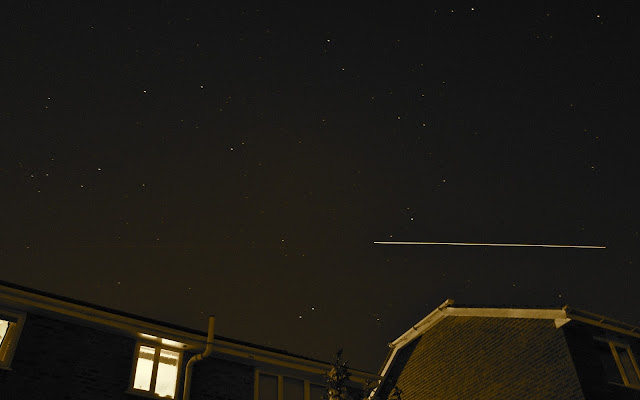The excitement of the ISS (& photography).

Watching the international space station pass over your house is exciting. Even before you start capturing the experience on camera, just knowing that this hulking great big metal mass is flying around the earth every 1 and a half hours, with people on board is extraordinary in itself. Tracking it as it flies over Paris at 200,000 feet as far as Poland and still being able to see it as it disappears into the distance is mind boggling. If you're in the least bit interested (and I've yet to meet anyone who isn't) then the first thing you need to do is check where it is, and if a visible pass is likely. These clear warm summer evenings are by far the best time to see it. However, it's not difficult once it comes into view. It's totally obvious as it looks like a star, that's moving fast! http://www.isstracker.com/ is a good place to start. but if you want an app, try ISS? for Android. The orbit shows up as a sine wave on a flat map, but of course the orbit is



